Table of Contents
Agnes Obel LIVE@LE GRAND REX, France, Apr.14th 2014 (VIDEO) *BEST-OF*
Agnes Obel performing at Le Grand Rex, Paris (France), April 14th 2014 – Setlist in description. No copyrights intended. Uploaded only for the pure enjoyment of Agnes Obel fans. For this fine lady’s music, see: http://www.agnesobel.com
Setlist :
00:00:55 – Louretta
00:04:10 – Philharmonics
00:08:55 – Beast
00:13:15 – Pass Them By
00:16:30 – Fuel To Fire
00:22:20 – On Powdered Ground
00:28:30 – Chord Left
00:32:10 – Aventine
00:36:50 – Dorian
00:43:00 – Wallflower
00:47:40 – Riverside
00:52:31 – Run Cried The Crawling
00:58:08 – Words Are Dead
01:02:35 – The Curse
Katie Cruel
Smoke And Mirrors
01:10:15 – Brother Sparrow
Search Agnes Obel best sheet music, books and transcriptions in the Library:
| Artist or Composer / Score name | Cover or sample | Contents (if available)* |
|---|---|---|
| The Beatles Beatles Collection Band Score Arr Johan De Meij |  | |
| The Beatles Sgt Pepper’s Lonely Hearts Club Band Guitar Tablature (13 Songs) |  | |
| The Beatles Songbook (Full Band Score) | 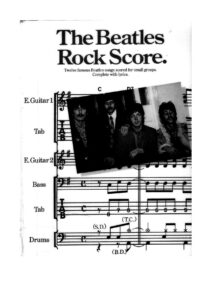 | |
| The Beatles Strawberry Fields Forever As Played By Andy Timmons Guitar With Tabs | The Beatles Strawberry Fields Forever As Played By Andy Timmons Guitar With Tabs | |
| The Beatles The Symphonic Beatles (Concert Band Series Conductor Score) |  | |
| The Beatles Basslines – Transcribed by Phil Mulford |  | The Beatles Basslines – Transcribed by Phil Mulford |
| The Beatles Revolver (Guitar songbook with Tablature) |  | The Beatles Revolver (Guitar songbook) |
| The Beatles – A Hard Days Night | ||
| The Beatles – Across The Universe Easy Solo Piano | 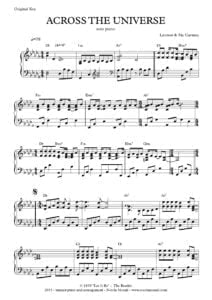 | |
| The Beatles – All Songs 1962-1974 (piano, vocal & guitar) | 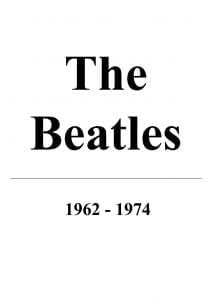 | The The Beatles – All Songs 1962-1974 (piano-vocal) |
| The Beatles – All The Songs The Story Behind Every Beatles Release | 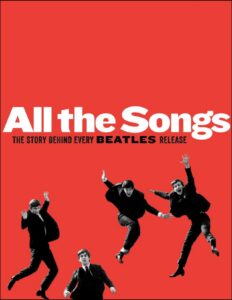 | The Beatles – All The Songs The Story Behind Every Beatles Release |
| The Beatles – BLACKBIRD Jazzy ver. | The Beatles – BLACKBIRD Jazzy ver. | |
| The Beatles – Complete Scores Full Transcriptions from the original recordings (Every Song written & recorded by The Beatles) |  | |
| The Beatles – Complete Songbook For Guitar, Tabs And Chords | 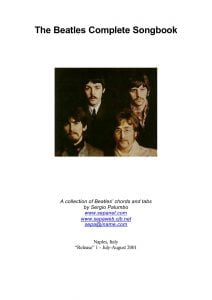 | The The Beatles – Complete Songbook For Guitar, Tabs And Chords |
| The Beatles – Eight Days A Week | ||
| The Beatles – Eleanor Rigby | ||
| The Beatles – Eleanor Rigby Concert Band Full Score Arr. by Larry Moore | 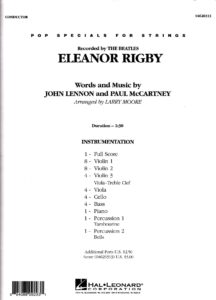 | |
| The Beatles – Here There And Everywhere | ||
| The Beatles – Hey Jude (Piano, vocal, Guitar chords) | The Beatles hey-jude | |
| The Beatles – I Want To Hold Your Hand | ||
| The Beatles – It’s Easy To Play Beatles 1 | 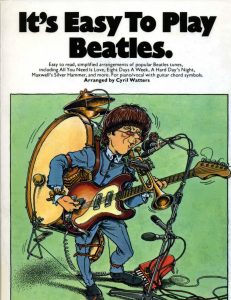 | The Beatles – It’s Easy To Play Beatles 1 |
| The Beatles – It’s Easy To Play Beatles 2 | 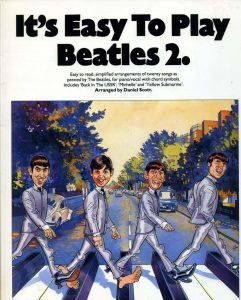 | The Beatles – It’s Easy To Play Beatles 2 |
| The Beatles – Lady Madonna | ||
| The Beatles – Let It Be | ||
| The Beatles – Let It Be (Musescore File).mscz | ||
| The Beatles – Love Me Do | ||
| The Beatles – Michelle Guitar Tablature TABs |  | |
| The Beatles – Michelle Satb |  | |
| The Beatles – Norwegian Wood | ||
| The Beatles – Ob La Di Ob La Da | ||
| The Beatles – Play along Guitar with the The Beatles (with AUDIO MP3) with Tablature | 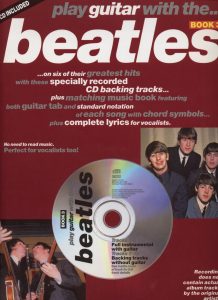 | Play Guitar With Beatles |
| The Beatles – Play Piano With (pdf + audio MP3 embedded) | 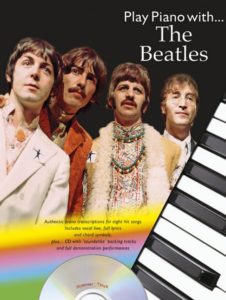 | Play piano with the beatles |
| The Beatles – Revolution In The Head The Beatles’ Records And The Sixties (Book) Biography | 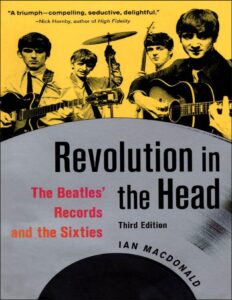 | |
| The Beatles – Something (Guitar Chords) (Musescore File).mscz | ||
| The Beatles – Songwriting Secrets of The Beatles (Book) by Dominique Pedler | 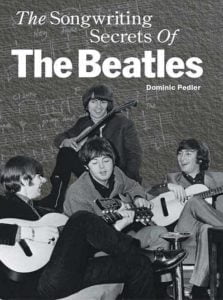 | The Beatles – Songwriting Secrets of the The Beatles |
| The Beatles – The Beatles Keyboard Book (23 Hits) Authentic transcriptions |  | The Beatles – The Beatles Keyboard Book (23 Hits) Authentic transcriptions |
| The Beatles – The Long And Winding Road | ||
| The Beatles – The White Album piano (piano, voice & guitar) | The Beatles – The White Album piano | |
| The Beatles – With A Little Help From My Friends | ||
| The Beatles – Yellow Submarine | ||
| The Beatles – Yesterday (Jazz Piano cover sheet music) | The Beatles – Yesterday (Jazz Piano cover sheet music) | |
| The Beatles : Love John Lennon and Paul McCArtney (full score instr.) | The Beatles Love | |
| The Beatles 9 Songs Arr for guitar by Noriyasu Takeuchi | The Beatles 9 Songs Arr for guitar by Noriyasu Takeuchi | |
| The Beatles 1962 1970 (Guitar TAB) | 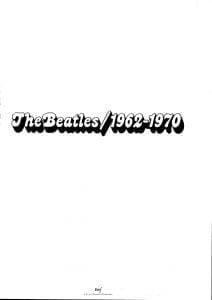 | The Beatles Guitar Songbook 1962 1970 |
| The Beatles A Hard Days Night – Guitar Tabs |  | The Beatles A Hard Days Night – Guitar Tabs |
| The Beatles Abbey Road Piano, Vocal & Guitar | 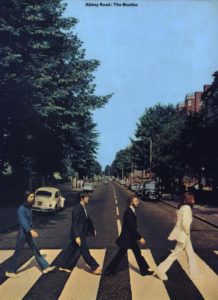 | The Beatles Abbey Road Piano, Vocal & Guitar |
| The Beatles All Jazzed Up |  | The Beatles All Jazzed Up |
| The Beatles Anthology 1 (Piano, vocal, guitar) | 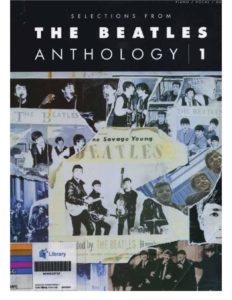 | The Beatles Anthology 1 (Piano, vocal, guitar) |
| The Beatles As Musicians Revolver Through The Anthology (Walter Everett) Biography |  | |
| The Beatles At The Hollywood Bowl Piano Vocal Guitar | 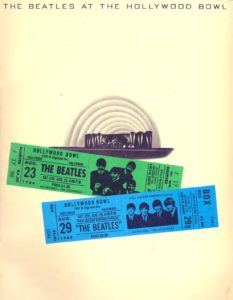 | The Beatles At The Hollywood Bowl Piano Vocal Guitar |
| The Beatles Because (Guitar) | 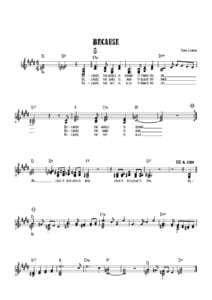 | |
| The Beatles Complete Chord Songbook (The Beatles) Guitar Chords |  | The Beatles Complete Chord Songbook (The Beatles) |
| The Beatles Complete Guitar Edition | 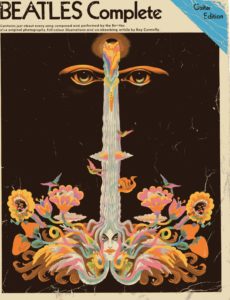 | The Beatles Complete Guitar Edition |
| The Beatles Essential Songs (Over 90 of Their Best) Piano Vocal Guitar Chords | 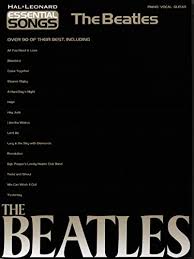 | The Beatles Essential Songs (Over 90 of Their Best) Piano Vocal Guitar Chords |
| The Beatles Fake Book (The Ultimate collection of Fake Books) |  | The Beatles Fake Book (The Ultimate collection of Fake Books) |
| The Beatles Favorites – Strum It! Guitar | 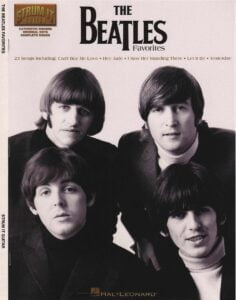 | The Beatles Favorites – Strum It! Guitar |
| The Beatles Fifty Fabulous Years – Video documentary Book Biography | 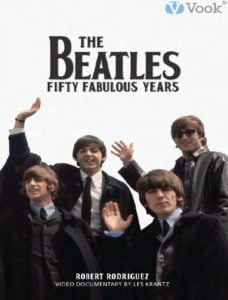 | |
| The Beatles Fingerpicking – 30 Songs solo guitar with Tablature | 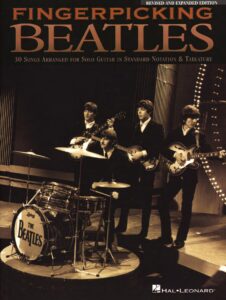 | The Beatles – The Fingerpicking Beatles (30 songs arranged for solo guitar and TAB) |
| The Beatles For Classical Guitar Arr John Hill sheet music with TABs | 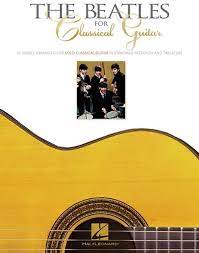 | The Beatles For Classical Guitar Arr John Hill sheet music with TABs |
| The Beatles For Guitar Solo arr. by Kenichi Ebe with Tablature (Complete) |  | The Beatles For Guitar Solo arr. by Kenichi Ebe with Tablature (Complete) |
| The Beatles For Jazz Guitar 15 Beatles hits arranged for jazz style with Tablature and chord symbols | 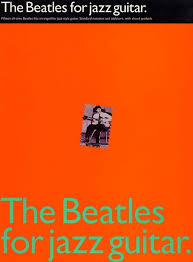 | The Beatles For Jazz Guitar 15 Beatles hits arranged for jazz style with Tablature and chord symbols |
| The Beatles For Jazz Guitar 23 Arrangements For Solo Guitar In Jazz Style With Standards Notation And Tablature With Chord Symbols | 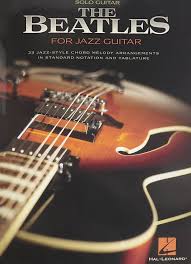 | The Beatles For Jazz Guitar 23 Arrangements For Solo Guitar In Jazz Style With Standards Notation And Tablature With Chord Symbols |
| The Beatles For Jazz Piano (sheet music songbook) | 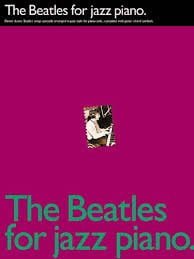 | The Beatles For Jazz Piano Music Sheet |
| The Beatles For Piano Duet Selection Intermediate Level 1 Piano 4 Hands | 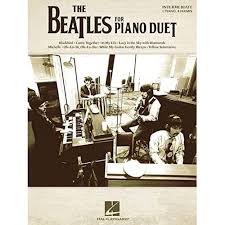 | The Beatles For Piano Duet Selection Intermediate Level 1 Piano 4 Hands |
| The Beatles Guitar Play along [Book + CD] Jam with The Beatles – with MP3 audio tracks with Tablature |  | Jam with the Beatles |
| The Beatles Guitar Signature Licks Best of The Beatles for Acoustic Guitar with Tablature Book + MP3 Audio Play Along (embedded) | 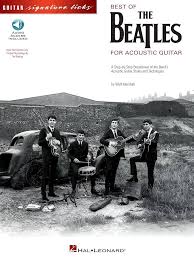 | The Beatles Guitar Signature Licks Best of The Beatles for Acoustic Guitar with Tablature Book + MP3 Audio Play Along (embedded) |
| The Beatles Jazz Piano Solos Series Volume 28 | 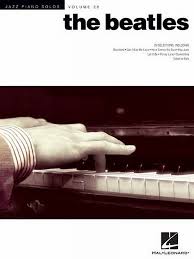 | The Beatles Jazz Piano Solos Series Volume 28 |
| The Beatles Let It Be Guitar TABLATURE | 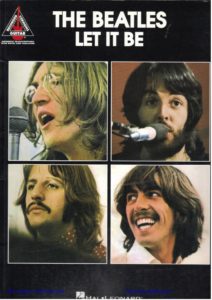 | The Beatles Let It Be Guitar |
| The Beatles Let it Be Piano Vocal Guitar Chords songbook | 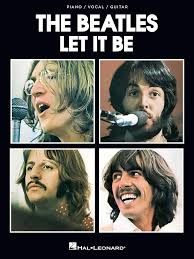 | The Beatles – Let it Be Piano Vocal Chords songbook Contents |
| The Beatles Michelle |  | |
| The Beatles Note for Note (Piano ) | 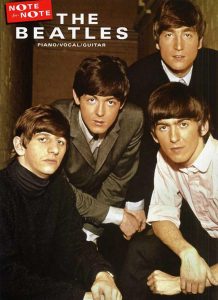 | The Beatles Note for Note Piano |
| The Beatles One Two Three Four by Craig Brown (Book) | 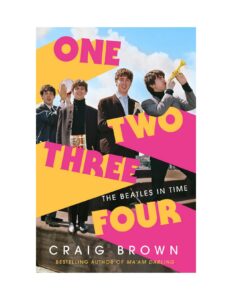 | |
| The Beatles Play Guitar With – play along with MP3 audio background tracks with Tablature | 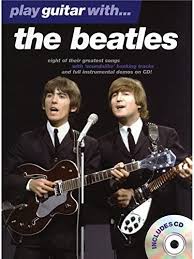 | The Beatles Play Guitar With – playalong with MP3 audio background tracks |
| The Beatles Recital Suites For Pianoforte (The Beatles) arr. by Phillip Keveren |  | The Beatles Recital Suites For Pianoforte (The Beatles) arr. by Phillip Keveren |
| The Beatles Sgt Pepper’s Lonely Heart – Book by Allan F. Moore Biography |  | |
| The Beatles The Best Beatles Collection (Guitar) The All Time Most Favorite Songs | 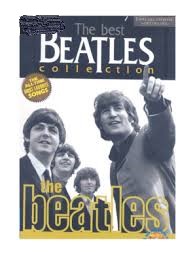 | The Beatles The Best Beatles Collection (Guitar) |
| The Beatles The Capitol Albums Volume 1 Piano Vocal Guitar chords | 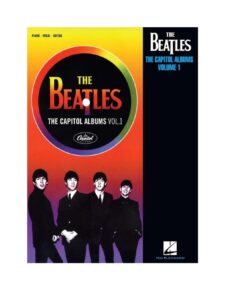 | The Beatles The Capitol Albums Volume 1 Piano Vocal Guitar chords |
| The Beatles, the biography by Bob Spitz (book) | 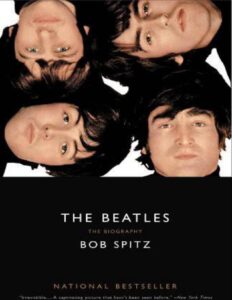 |
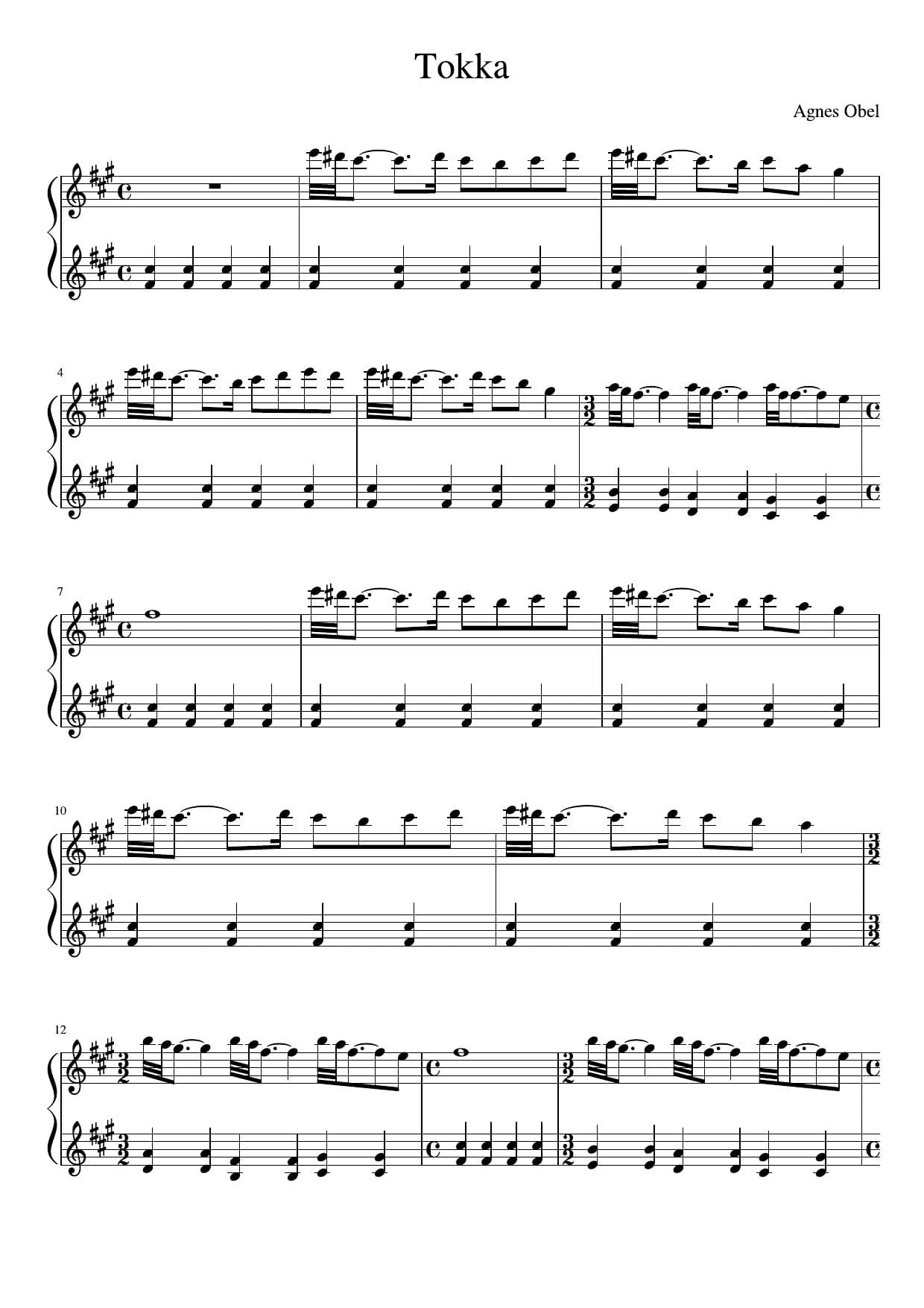
Please, subscribe to our Library.
If you are already a subscriber, please, check our NEW SCORES’ page every month for new sheet music. THANK YOU!
Best Sheet Music download from our Library.
Come join us now, and enjoy playing your beloved music and browse through great scores of every level and styles!
Can’t find the songbook you’re looking for? Please, email us at: sheetmusiclibrarypdf@gmail.com We’d like to help you!

Agnes Obel
Who is Agnes Obel?

The Enigmatic Soundscape: An Exhaustive Exploration of Agnes Obel
In the vast and often noisy landscape of contemporary music, the work of Agnes Caroline Thaarup Obel exists as a sanctuary of quiet intensity. A Danish composer, singer, and multi-instrumentalist, Obel crafts worlds that are at once intimate and expansive, melancholic and serene. Her music is not something one simply hears; it is something one inhabits—a meticulously constructed atmosphere where every note, every silence, and every whispered vocal feels deliberate and essential. To delve into her art is to explore a unique fusion of classical precision, folk storytelling, and minimalist pop, all guided by a singular, unwavering artistic vision.
Biography: The Copenhagen Foundation
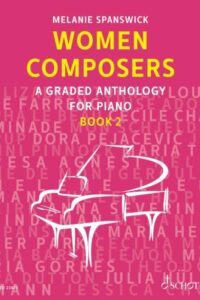
Agnes Obel was born on October 28, 1980, in Copenhagen, Denmark, into a creatively stimulating environment. Her mother, Katja Obel, was a classical pianist and music teacher, which meant that the sounds of Chopin, Bartók, and Debussy were the soundtrack to Agnes’s childhood. This early, profound immersion in the language of classical piano is the bedrock upon which her entire musical identity is built. She began playing piano at a young age, and the instrument became, and remains, her primary voice.
Her childhood was also marked by a deep connection to storytelling and the fantastical. She was an avid reader, drawn to fairy tales, not the sanitized versions, but the original, often dark and ambiguous stories by Hans Christian Andersen and the Brothers Grimm. This fascination with narrative ambiguity, with the interplay of light and shadow, beauty and sorrow, would later become a central thematic pillar of her songwriting.
Obel’s first foray into the practical world of music came during her teenage years when she joined the Danish band Sohio as the bassist. This experience provided her with a glimpse into band dynamics and songwriting, but it also solidified her desire for a more solitary and controlled creative process. After Sohio disbanded, she moved to Berlin in 2005, a relocation that would prove catalytic. The city’s sprawling, anonymous energy and its vibrant, yet non-intrusive, artistic community offered her the space and freedom to fully develop her own sound, away from the expectations of the Copenhagen scene.
Musical Style: A Genre of One’s Own
Attempting to pigeonhole Agnes Obel’s music is a futile exercise. It exists in the interstices between established genres. Critics and fans often use labels like chamber pop, dark folk, neoclassical, or minimalist art pop. While all are partially accurate, none fully capture the essence of her sound.
- Neoclassical Foundation: The core of Obel’s music is her piano playing. It is clean, articulate, and deeply indebted to the classical tradition. Unlike the virtuosic flamboyance of some modern pianists, her technique serves the composition. The lines are often lyrical and melodic, reminiscent of a vocalise, where the piano itself is the lead singer.
- Dark Folk & Chamber Pop Sensibilities: The arrangements elevate the music beyond pure classical. The use of cello (primarily played by her partner, Alex Brüel Flagstad, and later Anne Müller) is not merely ornamental; it provides the music’s emotional spine, adding depth, warmth, and a palpable sense of melancholy. The delicate, often pizzicato strings and the occasional, subtle use of vibraphone or celesta create a chamber music texture. This, combined with her folk-inflected approach to song structure and melody, places her in the realm of dark folk or chamber pop.
- Minimalist & Ambient Textures: Obel is a master of minimalism. Her compositions are built on the power of repetition and subtle evolution. A simple piano motif is established, and layers are gradually added or subtracted, creating a hypnotic, trance-like state. This approach shares DNA with the works of composers like Philip Glass and Arvo Pärt, where small changes feel monumental. The production is pristine and spacious, allowing each element to breathe. Silence is used as an instrument, with pauses and rests amplifying the emotional weight of the notes that surround them.
- The Vocal as an Ethereal Instrument: Obel’s voice is one of her most distinctive tools. It is a clear, cool soprano, often delivered in a near-whisper or a controlled, breathy tone. She frequently uses multi-tracking to create ethereal choirs of herself, weaving intricate vocal harmonies that float above the instrumental bed. The lyrics, while poetic and evocative, are often subordinate to the phonetic sound of the words; the voice becomes another texture in the overall tapestry.
Chord Progressions and Music Harmony: The Architecture of Melancholy
Agnes Obel’s harmonic language is central to the emotional impact of her music. She possesses an innate understanding of how chords can evoke specific, complex feelings.
- Diatonic Melancholy: A significant amount of her work is rooted in simple, diatonic major keys. However, she masterfully subverts the inherent “happiness” of a major key. She achieves this through several techniques:
- Slow Tempo and Sparse Texture: A slow, deliberate pace in a major key can often feel more poignant than joyful, creating a sense of nostalgia or bittersweet remembrance.
- Vocal Melody: Her vocal melodies often emphasize the more ambiguous or sorrowful notes of the scale, like the 6th or the minor 7th, against a major chord backdrop.
- Modal Mixture: She frequently borrows chords from the parallel minor key. A classic example is the use of the iv (minor four) chord in a major key progression (e.g., in C Major, using an F minor chord). This chord is sometimes called the “heartbreak chord” for its powerful, sudden injection of pathos. In “Riverside,” the progression (Am, G, C, F) is simple, but the movement to the F Major from C Major provides a lift that feels both hopeful and yearning, rather than triumphant.
- Haunting Bass Lines: The cello often functions as a second, moving bass line, sometimes creating compelling harmonic friction with the piano’s left hand. This creates a rich, polyphonic texture where the inner voices of the harmony are brought to the fore.
- Non-Functional Harmony: While she uses functional progressions (those with a clear sense of tension and release, like V-I), Obel is equally adept at non-functional harmony. She builds progressions based on the sheer color and mood of the chords moving in relation to one another, rather than a traditional Western classical logic. This is evident in pieces like “Familiar,” where the chromatic descent in the vocal and string lines creates a haunting, otherworldly atmosphere that feels both ancient and modern.
“Improvisational Licks” and Melodic Phrasing
Given the meticulously composed nature of her music, the concept of “improvisational licks” in a jazz or blues sense does not directly apply. However, if we reinterpret “licks” as signature melodic motifs and phrasing tendencies, we can identify the building blocks of her unique language.
- Piano Motifs: Her piano lines are often built on arpeggiated figures or simple, repeating melodic cells. These motifs are not flashy, but they are incredibly expressive. She favors intervallic leaps that feel yearning, followed by step-wise resolutions. The opening piano line of “The Curse” is a perfect example: a simple, ascending arpeggio that feels both fragile and determined.
- Vocal Phrasing: Her vocal delivery is her most potent “lick.” She has a tendency to:
- Use Portamento: She subtly slides between notes, giving her phrasing a fluid, almost conversational quality within its highly stylized framework.
- Embrace Asymmetry: Her vocal lines often defy predictable, four-bar phrasing. They breathe and stretch organically over the instrumental bed, creating a sense of spontaneous, stream-of-consciousness expression, even though it is precisely composed.
- The Whisper as a Weapon: Her use of breathy, intimate delivery is a consistent stylistic choice. It forces the listener to lean in, to engage actively with the music, transforming a performance into a secret shared.
Cooperation with Other Artists
Agnes Obel is famously self-contained. She is not only the singer and pianist but also the producer, sound engineer, and often the sole performer on her records. This auterist approach means she rarely engages in high-profile collaborations. Her most significant and consistent artistic partnership is with cellist Anne Müller (on Aventine and Citizen of Glass) and previously with her partner, cellist Alex Brüel Flagstad. The collaboration with Müller is particularly profound; the cello is not an accompaniment but a co-lead voice, engaging in a delicate dance with the piano and vocals. Their interplay is less about soloing and more about conversational counterpoint.
Beyond this core partnership, Obel’s collaborations are selective and often exist on the periphery of her main work. She contributed a cover of “The Curse” to the charity album LateNightTales and her music has been remixed by other artists, but she largely maintains a singular, focused path, preferring to realize her own vision without external dilution.
Influences: The Tapestry of Inspiration

Obel’s influences are a reflection of her music: a blend of the classical and the contemporary, the literary and the sonic.
- Musical: Her primary influence is undeniably the world of classical music. The impressionistic harmonies of Claude Debussy, the lyrical melancholy of Frédéric Chopin, and the minimalist structures of Philip Glass and Erik Satie are deeply embedded in her compositional DNA. From the popular music sphere, she has cited the poetic, minimalist rock of Roy Orbison and The Beatles, as well as the ethereal, gothic-tinged dream pop of Julee Cruise (whose work with Angelo Badalamenti on Twin Peaks is a clear spiritual ancestor). The Belgian singer Jan De Wilde is another less-known but oft-cited influence, particularly for his unusual, childlike yet dark melodic sense.
- Literary: The influence of fairy tales cannot be overstated. The narratives in her songs often feel like fragmented, modern-day fairy tales, dealing with themes of transformation, isolation, enchantment, and the hidden strangeness of the world. This gives her music a timeless, archetypal quality.
Legacy and Impact
While still an active artist, Agnes Obel’s legacy is already being forged. In an era of hyper-stimulation and digital clutter, she has proven the enduring power of quiet, patient, and deeply personal art. She has carved out a space where neoclassical music can find a mass audience without compromise, inspiring a new generation of composers and singers who operate in the space between classical and pop.
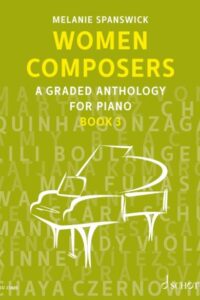
She stands as a role model for independent female artists, demonstrating that it is possible to achieve critical and commercial success while maintaining complete creative control over every aspect of one’s work—from composition and performance to production and engineering. Her success has helped legitimize “slow music,” proving that profound emotional resonance can be achieved through restraint and nuance rather than volume and spectacle.
Works, Filmography, and Most Known Compositions
Agnes Obel’s music possesses a strong cinematic quality, making it a natural fit for film and television. Her work has been featured in numerous shows and movies, often to underscore moments of introspection, tragedy, or ethereal beauty.
Notable Film/TV Placements:
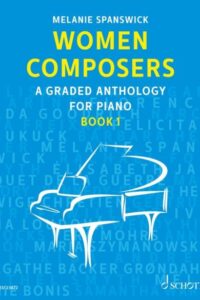
- “Fuel to Fire” in The Blacklist (Season 1).
- “Riverside” in Revenge and The Following.
- “Familiar” in Dark (the German Netflix series), where its haunting melody became synonymous with the show’s complex, time-bending narrative.
- “The Curse” in The Vampire Diaries and The Originals.
- “September Song” in The Good Wife.
- “Philharmonics” in the French film Je suis un soldat.
While she has not scored a full-length feature film to date, her existing body of work functions as a de facto soundtrack library for filmmakers seeking a mood of elegant melancholy.
Most Known Compositions and Performances:
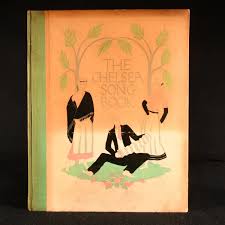
- “Riverside”: Her breakthrough single, a perfect introduction to her style with its hypnotic piano, evocative lyrics (“Talk to the river / I’m gonna die”), and serene, flowing atmosphere.
- “Familiar”: Arguably her most iconic piece post-Philharmonics. The driving, rhythmic string arrangement, the chromatic vocal melody, and the intense, almost obsessive energy make it a masterpiece of dark folk.
- “The Curse”: A stunning example of her narrative songwriting, with a music video that beautifully visualizes her aesthetic. The interplay between piano and cello is at its most sublime here.
- “Philharmonics”: The title track of her debut, a gentle, haunting lullaby that showcases the purity of her voice and the simplicity of her piano composition.
- “Dorian”: A track from Aventine that demonstrates her ability to build complex, layered textures from a simple, repeating bass line and interweaving vocal harmonies.
- “Broken Sleep”: From Citizen of Glass, this track showcases her more experimental side, incorporating prepared piano and a more dissonant, unsettling soundscape.
Her live performances are extensions of her recordings: intimate, focused, and visually striking. She typically performs with a small ensemble (cello, sometimes a second keyboardist/violist) in hushed, reverent venues, with lighting design that enhances the music’s atmospheric quality.
Discography: A Chronology of a Soundworld
- Philharmonics (2010)
- Label: PIAS Recordings
- Key Tracks: “Falling, Catching”, “Riverside”, “Brother Sparrow”, “Philharmonics”.
- Context: A stunning debut that immediately established her signature sound. It was a massive commercial success in Europe, going multi-platinum and winning five Danish Music Awards.
- Aventine (2013)
- Label: PIAS Recordings
- Key Tracks: “The Curse”, “Fuel to Fire”, “Dorian”, “Aventine”.
- Context: A refinement and deepening of the style established on Philharmonics. The production is even more detailed, the string arrangements more integrated, and the overall mood is perhaps more introspective and somber. It was met with widespread critical acclaim.
- Citizen of Glass (2016)
- Label: PIAS Recordings
- Key Tracks: “Familiar”, “It’s Happening Again”, “Trojan Horses”, “Golden Green”.
- Context: A conceptual album based on the German legal term “Gläserner Bürger” (transparent citizen), exploring themes of privacy, identity, and vulnerability. Musically, it is her most adventurous work, featuring the use of the trautonium, a glass harmonica, and prepared piano, creating a more fragmented and kaleidoscopic sound.
- Myopia (2020)
- Label: Deutsche Grammophon (a significant move to the legendary classical label)
- Key Tracks: “Island of Doom”, “Broken Sleep”, “Parliament of One”, “Won’t You Call Me”.
- Context: Created during a period of personal and global isolation, Myopia is her most insular and layered album. The title refers to both a visual condition and a state of mind. The production is dense, with vocals and instruments heavily treated with effects and layered into a seamless, dreamlike whole. It represents the logical conclusion of her studio-as-instrument philosophy.
Conclusion
Agnes Obel is not a musician for every moment, but for the moments that matter: the quiet hours of reflection, the pang of memory, the solace sought in beauty. She is an aural architect of mood, a composer who understands that the most powerful emotions are often whispered, not shouted. Through her mastery of the piano, her ethereal voice, and her uncompromising auterist vision, she has created a body of work that is instantly recognizable and profoundly moving. In a world that rarely stops to listen, the music of Agnes Obel is a compelling invitation to do just that—to lean in, to be still, and to be transported to the serene and haunting landscapes of her imagination.
Browse in the Library:
Or browse in the categories menus & download the Library Catalog PDF:
Please, subscribe to our Library.
If you are already a subscriber, please, check our NEW SCORES’ page every month for new sheet music. THANK YOU!
